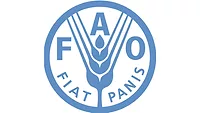FSA, FSS Call for Data on T-2, HT-2 Mycotoxins in Food

Image credit: Julia Kuzenkov via Unsplash
The UK Food Standards Agency (FSA) and Food Standards Scotland (FSS) are requesting data on the levels of T-2 and HT-2 toxins present in food. The deadline for submissions is 31 October 2023.
T-2 and HT-2 are mycotoxins which can be produced under cool and moist conditions prior to harvest by the fusarium species of fungi and mainly affect cereal crops such as oats, wheat, and barley. The presence of T-2 and HT-2 is heavily weather dependent and can exhibit large annual variability. The dependence on climate also means that there are currently no sufficient methods for mitigation of T-2 and HT-2 production through good agricultural practices (GAPs).
FSA and FSS are gathering information on T-2 and HT-2 toxins in food so that the contaminants can be reviewed and consumer exposure can be assessed through its risk analysis process. Outputs will include a risk assessment and evidence base which will inform any future risk management advice including possible risk management options to be presented to FSA/FSS ministers.
Data is being sought from throughout the cereals supply chain, from the field to the retail level, to understand the levels of T-2 and HT-2 to which consumers are being exposed. FSA and FSS are particularly interested in gathering data on cereals both pre- and post-cleaning/dehulling and finished products, including data that spans multiple years, where possible, to reflect any annual variability of T-2/HT-2 levels. Specifically, FSA and FSS would like to gather data regarding:
- The farm—unprocessed grain prior to cleaning
- Mill intake/post-cleaning
- Post-dehulling
- After processing—kilning, steel cutting, steaming, flaking, and etc.
- Finished products
- Imported products.
In addition to the mandatory fields included in the spreadsheet template, it would be useful to provide the following information, if available, using the evalInfo.com column (Column AP):
- A clear description of where sampling took place in the supply chain
- State (i.e., processed or unprocessed)
- Geographical region of sampling.
The agencies are seeking data that is representative of the levels found at each stage of the supply chain, including non-detects and high values. Data collected will be published as aggregated data and will not attributed to an individual, business, trade body, or organization.
Data can be sent by using either the FSA template or the format used to submit information to the European Food Safety Authority (EFSA). To provide your data, complete the spreadsheet and email it to fsacallsforevidence@food.gov.uk with a distinguishable file name including the terms “T-2” and “HT-2.”
Looking for quick answers on food safety topics?
Try Ask FSM, our new smart AI search tool.
Ask FSM →








